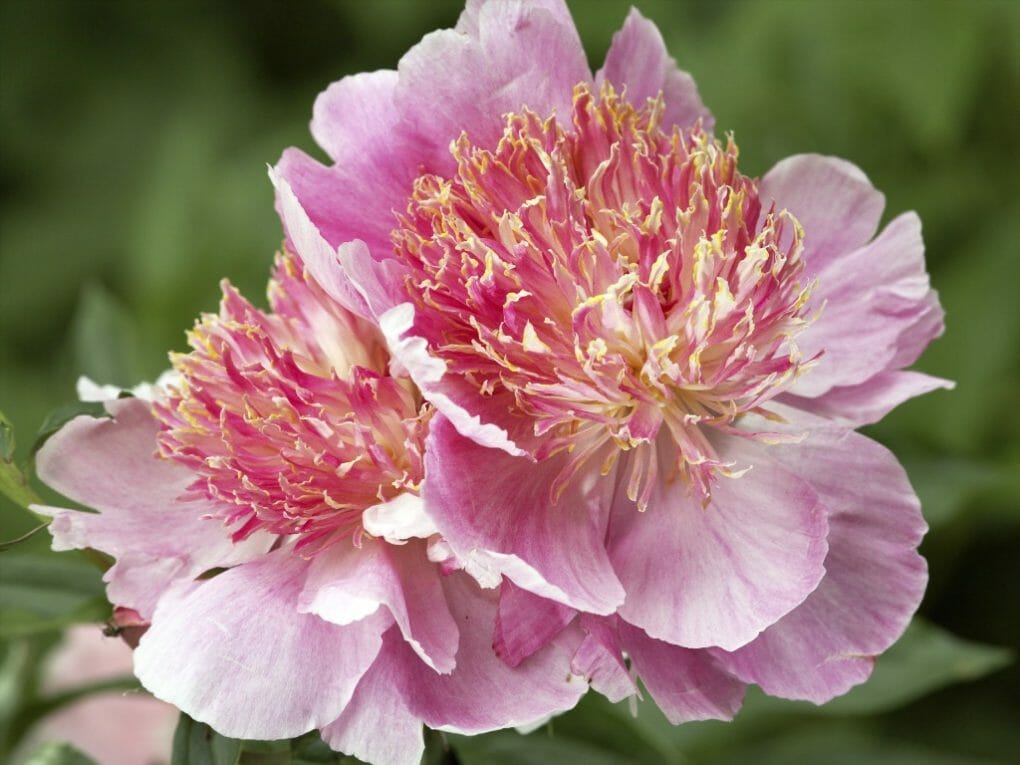Peony Root Planting: Instructions for Planting Peony Roots

If you’re looking to add some lush greenery to your garden, you’ll want to consider planting peony roots. These versatile plants are easy to care for and can be planted in a variety of soils and climates. Plus, their flowers are beautiful and can add a touch of color to any garden. In this guide, we’ll explain how to plant peony roots, and provide tips on how to care for them during their growth cycle.
Table of Contents
Instructions for Planting Peony Roots
Planting peony roots in the garden could not be simpler. You shouldn’t put off planting them just because they have an unusual appearance. In most cases, it is best to plant them as quickly as possible after receiving them.
Step 1: Select a Location for Planting
Make a selection of a spot in the garden in which to plant the peony roots. The ideal conditions for peony plant growth are full sun, with at least six to eight hours of sunlight per day falling directly on the leaves. The plants require a substantial amount of sunlight in order to put on the most beautiful display of spring blossoms possible. It is possible that some afternoon shade will be beneficial for the plants in areas that experience particularly hot summers and have strong sunlight in the afternoon. In hot climates, blooms can be helped to last longer and watering needs can be reduced by providing shade in the afternoon (especially in Zones 7-8).
Peonies require a soil that is moist, but they do best in an environment that allows excess water to drain away well. Peonies do best in well-drained sandy loam soil that receives consistent moisture (either from rain or from supplemental irrigation), but it is possible for them to thrive in less-than-ideal garden soil as well. Planting peonies in clay soil or in areas with poor drainage is best done on a raised mound. When well-draining garden soil is stacked, a free-draining flower bed is created, which prevents water from collecting near the plants’ roots and instead allows it to run downhill.
Step 2: Unwrap the Peony Roots
Unwrap the peony roots carefully. Peony roots are typically packaged with a mixture of dry peat moss and sawdust. Remove the peat or sawdust covering the roots so you can examine them closely.
There are three major components to a peony: the roots, the crown, and the eyes.
Peony plants have long, thick tubers for roots. The roots of a peony are visually similar to brown carrots. A plant’s young roots may be pliable and able to bend slightly, while those of an older plant may appear woody and chunky. The peony plant’s roots converge at its “crown,” or uppermost node. The protruding bump at the very top is called the crown. “Eyes” refers to the new growth on the “crown,” which contains the flower buds. The “eyes” of a peony are typically pink or white and have a slight point.
The “eyes” of a peony root are the most crucial part to locate before you plant it. Planting “eyes” at a specific depth is essential, and they should be set near the top of the hole. See if you can find the eyes on each peony root. Two or three eyes can usually be found on bare-root peonies at garden centers and nurseries. Peony “eyes” are circled in the image above.
Step 3: Let the Peony Roots Soak
After several months of being kept in a cool environment, dormant peony roots frequently become dry. It is possible to give them a head start on getting established in the soil by soaking them in clean, lukewarm water for a period of time. This will help to plump them up and hydrate them.

To soak the peony roots, fill a bowl with lukewarm, sterile water and set it aside. Peony roots that have become extremely dry can be rehydrated by soaking them for up to four hours. Peony roots that do not appear to be overly dried out can be soaked for approximately thirty minutes. Although it is not strictly necessary to soak the peony roots before planting, doing so seems to be of great assistance in rousing the
Step 4: Plant Peony Roots
Each peony root should be planted in a wide, shallow hole. The width of the holes should be roughly equal to the length of the peony’s root. Peony roots are shallow, so planting holes don’t have to be either. Peony roots should be planted at least 3 feet apart.
The peony root goes in first, followed by the crown, and finally the eyes. Due to their peculiar shapes, the roots of some peonies can be a challenge to work with. Discover the “eyes” that are pink and white. When the peony is properly planted, the “eyes” will be toward the top of the root. You should try to get the peony root aligned so that the eyes (there are usually two or three on a single root) are all facing the same direction (all at the same approximate elevation). It is recommended that the “eyes” of the peony roots be buried about 1″ below the finished soil level.
Backfill the hole using the soil you removed from the peony’s hole, holding the root in place with one hand. Take care not to damage the peony root crown by leaving any large air pockets and avoiding damaging the buds or eyes. Look again at how high the eyes are in relation to the ground around the hole. The “eyes” of a peony plant need to be planted about an inch deep in the ground. Although peonies can be planted a little deeper in zones 2 and 3, it is still best to not bury the plants’ eyes more than 2 inches below the soil’s surface.
Step 5: Water & Mulch
A thorough soaking of the entire planting area should follow the planting process with clean water. Even if soil has settled considerably inside the planting hole’s borders, it is possible to bring it up to grade by adding more soil. Applying organic mulch after watering will help retain soil moisture and prevent weed growth.
How to Take Care of Peonies

Once a week, give the roots of your newly planted peony a good soaking of water. They may require more frequent watering in dry weather. New roots can get a good start in the soil if they are watered regularly.
The first year or two after planting, water the peony at least once a week. After they’ve been planted, peonies require little care. Years after being planted, some peony bushes can go without water and still bloom beautifully each spring. It’s crucial that they have a strong foundation to build upon. If you give them plenty of water in the beginning, you’ll have flowers for decades to come.
Fertilizing peonies after planting is usually unnecessary unless you’re planting them in particularly nutrient-poor soil. Peonies are typically fertilized in the spring, when the stems are about a foot tall and the leaves are beginning to fold out, if fertilization is necessary. In late summer or early fall, you can also feed some peonies.
Selecting Peony Tuber
Peony roots are available in bulk from some independent nurseries that divide and sell them themselves. In that case, you can pick and choose which individual roots to purchase.
Baby carrot-like firm roots are what you’re after. Stay away from any roots that are too thick, woody, or have holes or strange knobs. Look for root pieces that have at least three eyes (the pink growth buds). Don’t use any roots that look moldy or mildewed.
